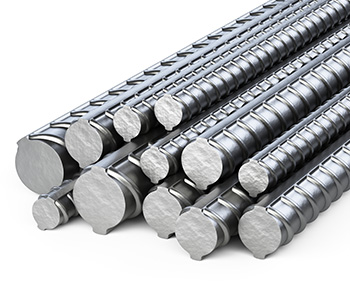
History of the discovery of stainless steels
When iron combines with oxygen in the air, red iron oxide (which is iron rust) is produced. There is also a type of steel that does not rust.
The English metallurgist Harry Brearley was the first to discover the alloy.
Steel Rebar – Steel 316 – Stainless Steel Rebar – Steel 320 – Steel 420
In fact, it was in the years before World War I that gun production increased dramatically, and Breirley began testing for an alloy of steel that was highly resistant to high temperature erosion in weapons. To achieve the desired alloy. He began to increase the amount of worm in the steel and compared it to standard carbon steels.
The man left all the metals in his lab warehouse after a series of tests and no results were obtained, and left in despair.
After months, he suddenly realized that there was a metal among these metals that, despite the rusting of all the metals, did not rust or oxidize.
After careful testing, Breirley found that the piece was an alloy of steel with 14% chromium. Today, it is known as “stainless steel” or “steel”.
Steel rebars are in fact the same as alloy steel ingots that are used for special purposes such as steel shafts of non-sized steel pipes.
Steel rebar in the Iranian market includes 304 steel round, 316 steel round, 320 steel round, 321 steel round and 420 steel round.
1.4301 stainless steel steel rebar with another name 304 is a so-called stainless steel. (It has no magnetic properties.)
304 stainless steel typically contains 18% chromium and 8% nickel.
Stainless steel rebar – Steel 320 – Steel 420
Steel rebars are also produced with another alloy called 316 or 1.4401 steel rebars. This type of rebar, in addition to being stainless, also has anti-acid properties.
L 316 sheet and 316Ti steel are similar to 316 stainless steel sheets and some of their properties change with a slight change in the amount of alloying elements (such as chromium, nickel and molybdenum).
One of the best and easiest ways to distinguish steel rebar from non-rebar is to have a magnet that prevents any mistakes in the sale of steel.
Steel steel rebars are produced in the country’s foundry workshops in the form of centrifugal casting or centrifugal casting and also in the form of cast (as cast).
It should be noted that in some requests and terms, steel rebar is referred to in English as Rod Steel or Rod Stainless Steel, which means the same as stainless steel (steel rebar).
Due to its low maintenance cost, steel steel rebar can be used effectively to provide a clean and beautiful environment.
Steel rebars from 10 to 160 miles can be offered to serve our dear customers and colleagues.
Steel rebar
Stainless steel is another group of alloys that we introduce separately, the presence of an element called chromium in the compounds that make steel leads to the production of this new alloy with unique properties.
Stainless steel 1.4021 stainless steel, also known as 420, has a good magnetic property and is used in parts of pumps, turbines and the like.
Chemical composition of 316 steel rebar
| Ni | Si | S | P | Mn | Cr | C |
| 10,0 – 14,00 | 0,75 max | 0,030 max | 0,045 max | 2,00 max | 16,00 – 18,00 | 0,08 max |
Chemical composition of 304 steel rebar
Chemical composition of 320 steel rebar

